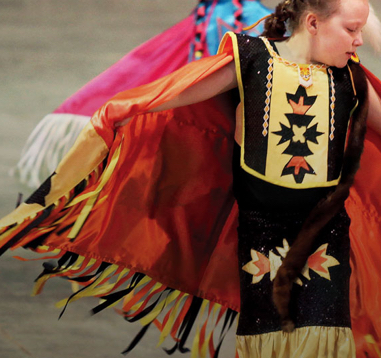Our Mission
The Silviculture and Fire Protection Program’s mission is to promote the Tribal tradition of being good stewards of all natural resources by protecting and maintaining forest health and productivity for future use. The Program will use the best available science and Tribal ecological knowledge to make balanced decisions and will maintain a state of protective readiness to guard Tribal natural resources.
Site Preparation
Following regeneration harvest, residual vegetation and logging debris would be treated if necessary to reduce fire hazard, provide room for planting of tree seedlings, lessen initial competition from other vegetation, and limit the cover for seedling damaging rodents. Methods used would include prescribed fire and mechanical clearing. The preferred method of site preparation is prescribed fire. Burning is usually conducted when soil and fuel moistures conditions will keep fire intensity low. Low intensity fires on the Reservation have insignificant impacts on site productivity. Moderate to high intensity fires have the potential to reduce soil productivity, volatilize significant amounts of available nitrogen and sulfur, and increase leaching of important nutrients.
The techniques employed to reduce compaction during mechanical clearing include using low ground pressure machines, clearing only when soils are very dry, and rehabilitate by ripping an/or water barring any ground based skid trails after clearing.
Reforestation Methods Planting Stock
Planting is the primary method of reforestation used on the Reservation. Artificial and natural seeding, with exception of red alder and big leaf maple, are not effective or as rapid as planting. Natural regeneration may supplement planting but is not relied on for stocking.
The selection of tree species, planting density (usually 10’x10’), and stock types depends on site characteristics, the composition of the original stand, and projected future management of each stand. Douglas-fir is the major species planted, comprising 85 to 95 percent of the total trees. Whereas, western hemlock, western red cedar, grand-fir, red alder, and big leaf maple species comprise 5 to 15 percent of the stands. The hardwood component such as red alder and big leaf maple comes into the stand through natural seeding, while big leaf maple is maintained in the stand through stump sprouts.
Seed Source and Genetic Improvement
The NRD, through Cooperative Agreement with the Bureau of Land Management, has acquired seed from its forest genetics program. In their program, several conifer species (douglas-fir, western red cedar, and western hemlock) have been selected for genetically controlled characteristics such as growth, tree form and resistance to disease. This seed source will comprise be no more than 25 percent of the seedling production contracts. The remaining seed will be collected on the Reservation by felling phenotypically superior trees in coordination with the projected 10-year harvest plan.
Timber Stand Improvement
Timber stand improvement activities such as pre-commercial thinning, fertilization, and pruning are preformed to promote growth while maintaining health and productivity. Monitoring these silvicultural treatments will verify that objectives are being met under the established guidelines set by the Natural Resources Division.
Fire Program
Through the Master Cooperative Fire Protection Agreement, Oregon Department of Forestry is responsible for initial attack and management of Reservation fires.
The Tribe does have a self-sufficient fire program that works closely with the Oregon Department of Forestry. This program exists because of the Tribes Cooperative Agreement with the BIA, Northwest Regional Office. This agreement facilitates the use of qualified Tribal employees on wildland fire and other emergency management activities. The agreement also explains the labor, equipment, and engine reimbursement process. Currently, the fire program has (1) Type 4 and (4) Type 6 engines. Engines are under rental agreement, which creates a revenue stream that funds the program. The program also supports a 20 person Type 2 IA crew, which can be dispatched anywhere in the Continental United States.

